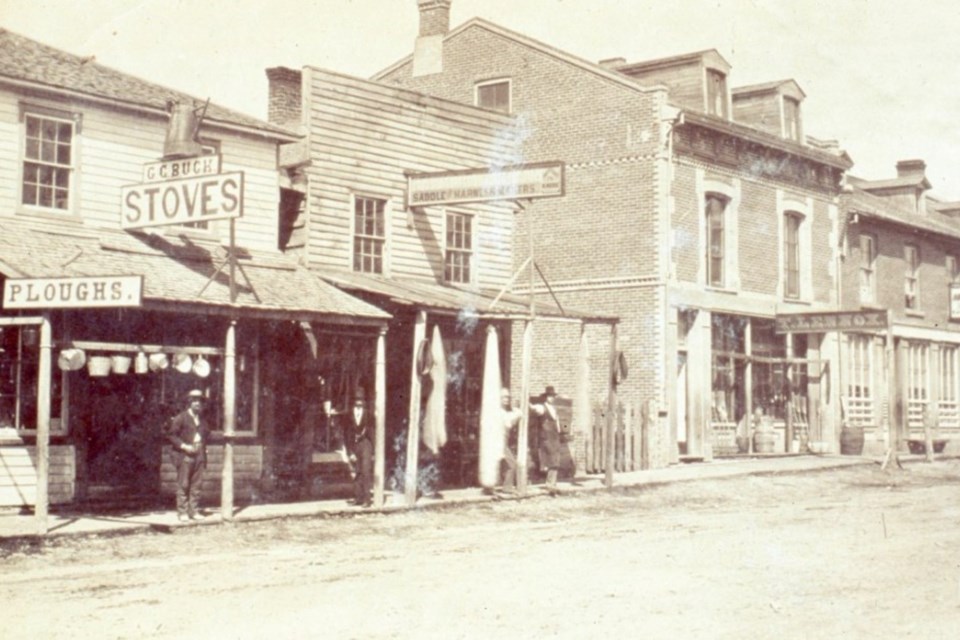“CHRISTMAS PRESENTS. A large stock of writing desks and fancy work-boxes now selling for 75 cents each and well adapted for presentation. Coffins of all kinds at half the price usually charged by others; also an excellent hearse at a trifling charge.”
Christmas shopping in Barrie, in 1864, was just a little bit different than our present-day experience.
No malls, no online shopping, not even a T. Eaton catalogue; just a collection of wooden buildings, many nothing more than log cabins, lining the muddy streets of what was to become Downtown Barrie.
When Mr. J. Pearce, a cabinet maker newly arrived from London, England, placed his ad in the Northern Advance, most shops in town were of the mercantile, dry goods or emporium style. In other words, they sold a wide variety of goods in order to be profitable.
In 1868, Victoria House, the short-lived business of P&N Melady, offered a large selection of shawls and capes, fabric, horse blankets, underwear and coats. With every ten dollars spent, the shop offered to supply customers with a gold pin to give away as a Christmas gift.
Interestingly, Victoria House advertised that they would accept Upper Canada currency. For a short time between 1851 and 1863, the Bank of Upper Canada issued its own money. After Confederation, most of the coinage was purchased by the Canadian Government. Victoria House, it seems, was happy to accept any money, discontinued or not.
Long before the big day, preparations for Christmas began. Household cooks and bakers gathered the ingredients they would need to begin their Christmas baking.
“Mr. Thos. Lennox, the grocery and provisions merchant of Bayfield Street, is already preparing for Christmas cheer; and has laid in a magnificent stock of Christmas fruit, teas, groceries and provisions, which will be found to be no. 1 in quality as well as cheap in price.”
Mr. Lennox’s ad from the November 25th, 1875 edition of the Northern Advance noted that he had also purchased some prize-winning cattle, some prime turkey, sheep, pigs and geese and other fowl, and that he was ready to take orders for Christmas.
Most provision shops would have offered a large assortment of dried and candied fruit in the weeks before Christmas. These ingredients, along with suet or butter, spices, nuts, eggs, flour or breadcrumbs, would be combined and either baked into a cake or steamed as a pudding.
These seasonal sweet items contained relatively expensive ingredients. Liquors were normally purchased as well, to be used to moisten and preserve this special cake.
After the house was decorated, the food prepared and the presents opened, this is how a typical Barrie Christmas unfolded in 1872, as reported by the Northern Advance.
“Christmas Day was intensely cold, yet a number of pedestrians were about, sleigh rides were numerous, but the stores being closed gave the town a somewhat Sabbatic appearance. Several weddings took place in town and the various churches and sabbath schools kept the day in appropriate manner.”
Each week, the Barrie Historical Archive provides BarrieToday readers with a glimpse of the city’s past. This unique column features photos and stories from years gone by and is sure to appeal to the historian in each of us.



